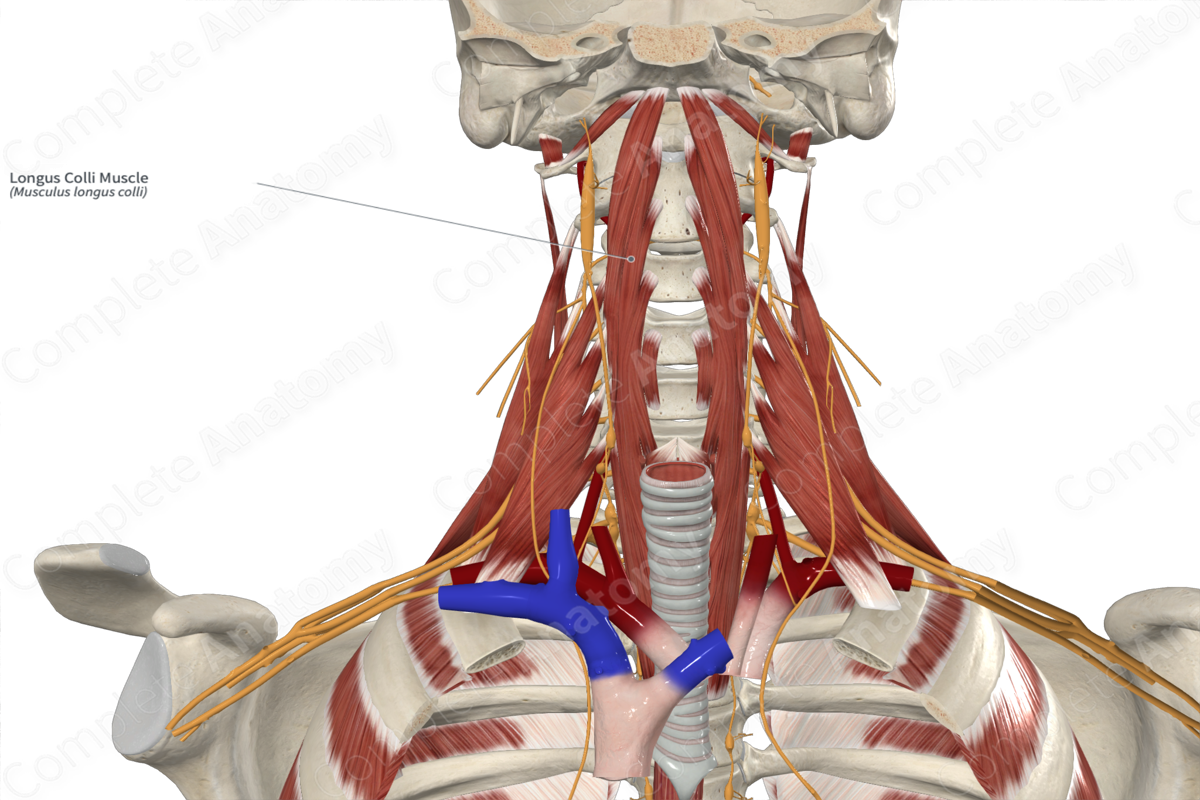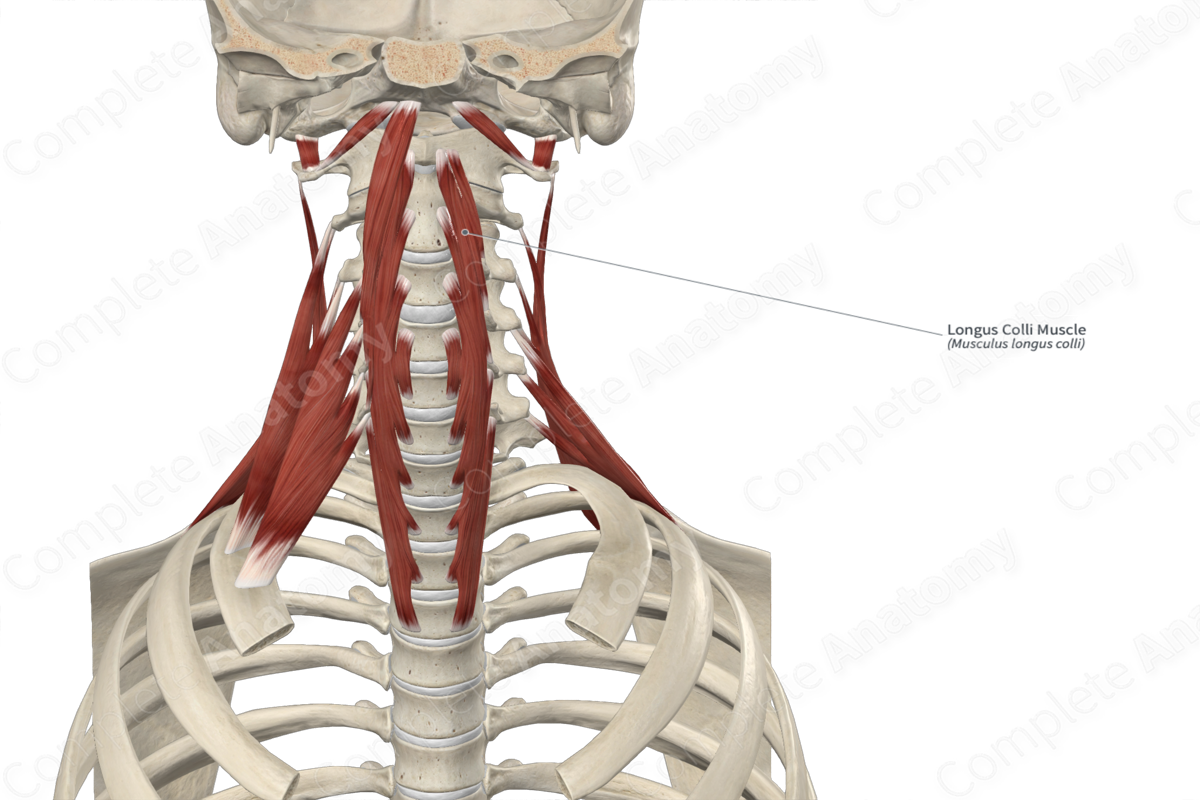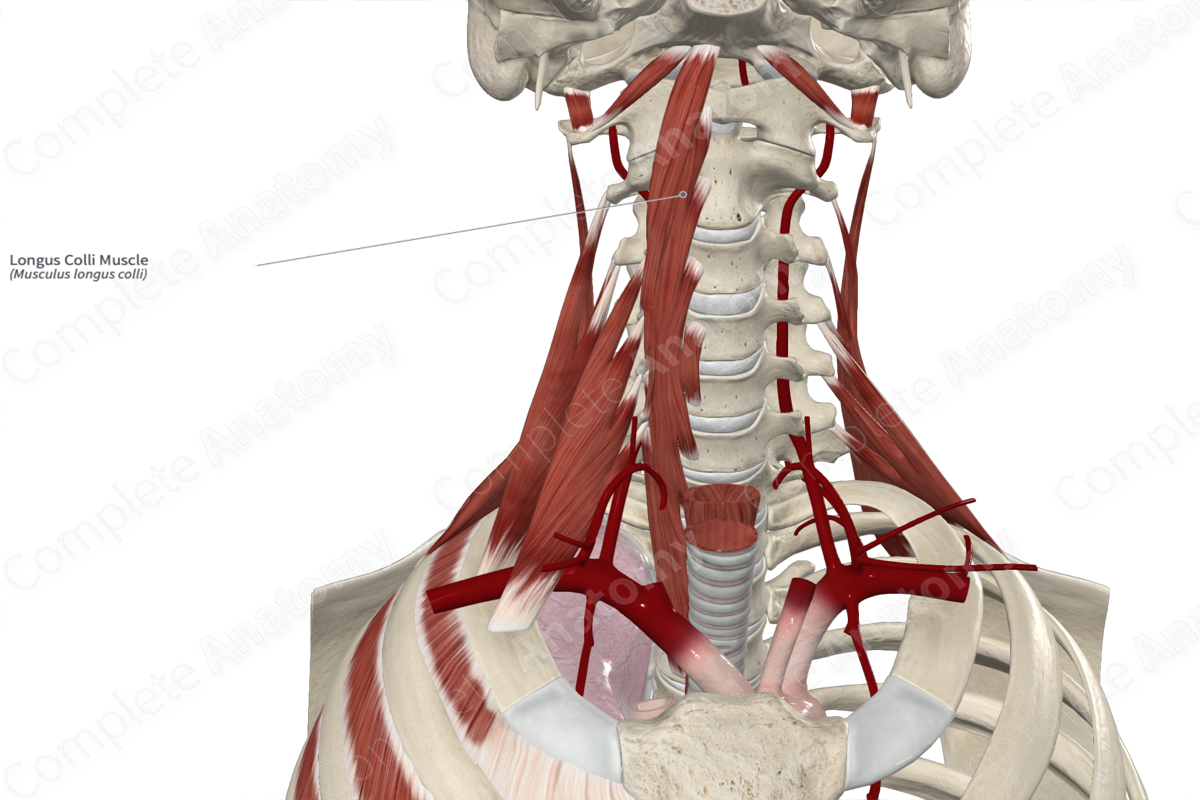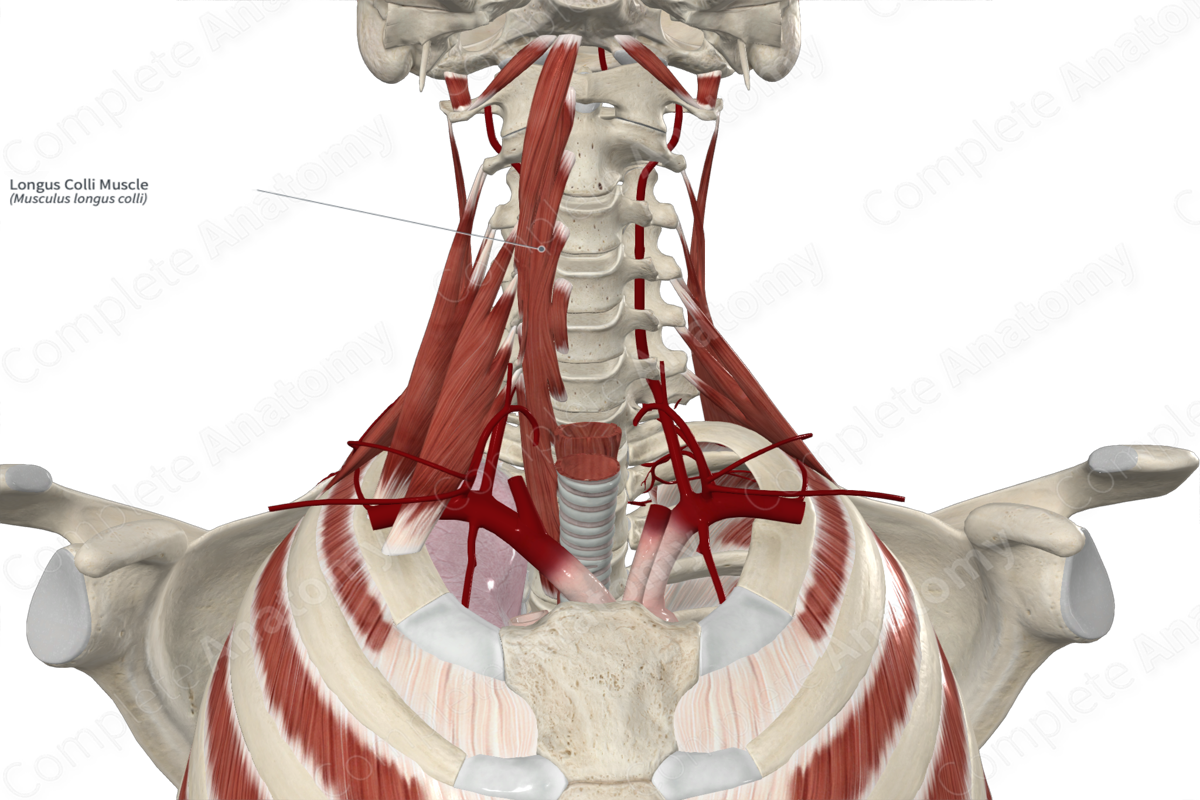
Quick Facts
Origin: Anterior aspects of C3-T3 vertebrae.
Insertion: Anterior aspects of C1-C6 vertebrae.
Action: Flexes and rotates neck at cervical vertebral joints.
Innervation: Anterior rami of second to sixth cervical nerves (C2-C6).
Arterial Supply: Vertebral, inferior thyroid, and ascending pharyngeal arteries.
Origin
The longus colli muscle sits on the anterior aspect of the vertebral column between the atlas to the third thoracic vertebra. It has three regions, a superior oblique region, a vertical region, and an inferior oblique region.
The inferior oblique portion arises from the vertebral bodies of the first to third thoracic vertebrae (T1-T3). The vertical intermediate portion arises from the anterior vertebral bodies of fifth cervical to the third thoracic vertebrae (C5-T3). The superior oblique portion arises from the anterior tubercles of the transverse processes of third to fifth cervical vertebrae (C3-C5).
Insertion
The inferior oblique portion extends superolaterally and inserts onto the anterior tubercles of the transverse processes of fifth and sixth cervical vertebrae (C5-C6). The vertical intermediate portion inserts into anterior aspect of the vertebral bodies of the second to fourth cervical vertebrae (C2-C4). The superior oblique portion inserts into the anterior arch of the atlas (C1).
Actions
Overall, the longus colli muscle is involved in multiple actions:
- during unilateral contraction, it rotates the neck to the opposite side at the cervical vertebral joints;
- during bilateral contraction, it flexes the neck at the cervical vertebral joints (Standring, 2016).
References
Standring, S. (2016) Gray's Anatomy: The Anatomical Basis of Clinical Practice. Gray's Anatomy Series 41st edn.: Elsevier Limited.



